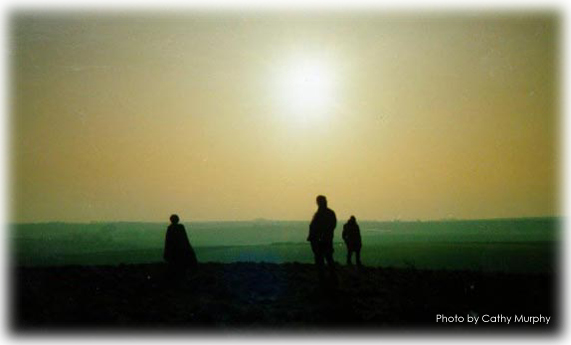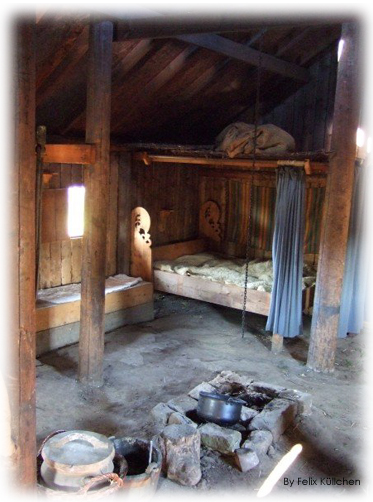 What A Beautiful Day
What A Beautiful Day
Britain is a splendid island, rich in beautiful historical sites: the Anglo-Saxon experience would not be complete without visiting them. On top of this, students in Oxford at some point feel a sudden urge to leave the hectic life of town to withdraw into the countryside, so we hop in a minibus and off we go. Needless to say, we go on trips in costume: there's nothing quite like dressing up in Dark Age kit and going to places whose essence has not been touched by time. Whether in the warm or in the breeze, the blue sky or the grey mist, nothing compares to running around the rolling hills for no apparent reason, with one's cloak fluttering in the wind. Freedom!
Among the places we have visited are Avebury, Adam's Grave (well, we think we found it anyway), Dragon Hill, the mysterious Blowing Stone, Glastonbury, Stonehenge, the West Kennet Long Barrow (great for hill-rolling), Silbury Hill, Wayland's Smithy, the Uffington White Horse, Tintagel, St. Michael's Mount, Men-An-Tol and Land's End. Further afield in Wales were Ogmoor, Harlech, Dolgellau and Snowdon. We have also been to Sainsbury's.
 At The White Horse
At The White Horse
The White Horse at Uffington in south-west Oxfordshire is one of the most famous hill figures in Britain. It has been dated to the Iron Age, but could be much older. It is 110 metres in length. About a mile and a half away to the North one can see that the figure resembles as much a dragon as it does a horse. A walk up White Horse Hill on a winter's day is quite a feat: few sheep and fewer men are brave enough to face the raging wind and the mysterious fog, but it's worth it for the gripping views across the Vale of the White Horse.
 The Glastonbury Tor: Legendary Home Of The King Of The Fairies And The Underworld
The Glastonbury Tor: Legendary Home Of The King Of The Fairies And The Underworld
The terraces around the Tor may have been set up in neolithic times as a labyrinth for some sacred purpose. In Roman times Glastonbury was a nodal point of trade routes. After the Romans left the hill was settled by by Celtic peoples in rough huts. These could have been either hermits or a small garrison for a local warlord. The Christian settlement was expanded by the Anglo-Saxons (probably by monks or hermits) in the late seventh century and the earliest Abbey remains date from this time. In the tenth or eleventh century, the top was levelled to build a large stone church, which was destroyed by an earthquake in 1275. A smaller one was built in 1323 and was dissolved along with Glastonbury Abbey by Henry VIII in 1539. The church was quarried for stone. The tower was repaired this century and is now in the hands of the National Trust. The hill is a very pleasant climb, with a great panorama from the top. For some people, this mysterious hill is a place of pilgrimage. To others it is one of the planet's energy-centres. We found that Glastonbury was a great place for shopping.
 Life in the Danelaw
Life in the Danelaw
In addition to day trips, we occasionally go on holiday for a week or so. One of our favourite places is the reconstructed Danelaw village at the Yorkshire Museum of Farming, Murton Park. This amazing open-air museum has around a dozen houses of varying construction, plus a long hall, which are our homes while we're in residence (thermal underwear is a must). During the day we make clothing and kit, play dice or henefetafl, or just sit around the village green and chat. When members of the public visiting the museum appear, we talk to them about Dark Age life and crafts. After the museum has closed for the day, we're free to fight in the village. After cooking our dinner over the communal camp fire, we entertain ourselves with mead and song well into the night. In 2007 we made a video of our stay, which you can watch by clicking here.
Have a look at our picture galleries for more photos from our journeys.
